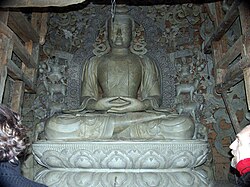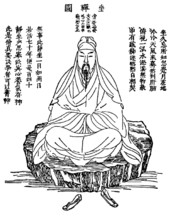Meditation has been linked to a variety of health benefits. A study
of college students by Oman, Shapiro, Thoresen, Plante, and Flinders
(2008) found that meditation may produce physiological benefits by
changing neurological processes. This finding was supported by an expert
panel at the National Institutes of Health. The practice of meditation
has also been linked with various favourable outcomes that include:
“effective functioning, including academic performance, concentration,
perceptual sensitivity, reaction time, memory, self control, empathy,
and self esteem.”(Oman et al., 2008, pg. 570) In their evaluation
of the effects of two meditation-based programs they were able to
conclude that meditating had stress reducing effects and cogitation, and
also increased forgiveness. (Oman et al., 2008)
In a cross-sectional survey research design study lead by Li Chuan
Chu (2009), Chu demonstrated that benefits to the psychological state of
the participants in the study arose from practicing meditation.
Meditation enhances overall psychological health and preserves a
positive attitude towards stress. (Chu, 2009)
Mindfulness Meditation has now entered the health care domain because
of evidence suggesting a positive correlation between the practice and
emotional and physical health. Examples of such benefits include:
reduction in stress, anxiety, depression, headaches, pain, elevated
blood pressure, etc. Researchers at the University of Massachusetts
found that those who meditated approximately half an hour per day during
an eight week period reported that at the end of the period, they were
better able to act in a state of awareness and observation. Respondents
also said they felt non-judgmental. (Harvard’s Women’s Health Watch,
2011)
Over 1,000 publications on meditation have appeared to date.
Many of the early studies lack a theoretically unified perspective, often resulting in poor methodological quality,
as discussed above in the section Definition and scope.
A review of scientific studies identified relaxation, concentration,
an altered state of awareness, a suspension of logical thought and the
maintenance of a self-observing attitude as the behavioral components of
meditation;
it is accompanied by a host of biochemical and physical changes in the body that alter metabolism, heart rate, respiration, blood pressure and brain activation.
Meditation has been used in clinical settings as a method of stress and pain reduction. Meditation has also been studied specifically for its effects on stress.
Despite the large number of scientific publications on meditation, its measurable effect on brain activity is still not well understood.
In June, 2007 the United States National Center for Complementary and Alternative Medicine published an independent, peer-reviewed, meta-analysis of the state of research on meditation and health outcomes.The report reviewed 813 studies in five broad categories of meditation: mantra meditation, mindfulness meditation, yoga, T'ai chi and Qigong.
The result was mixed. The report concluded that "firm conclusions on
the effects of meditation practices in healthcare cannot be drawn based
on the available evidence. However, the results analyzed from
methodologically stronger research include findings sufficiently
favorable to emphasize the value of further research in this field." More rigor in future studies was called for.
More recent research suggests that meditation may increase attention spans. A recent randomized study published in Psychological Science reported that practicing meditation led to doing better on a task related to sustained attention.

